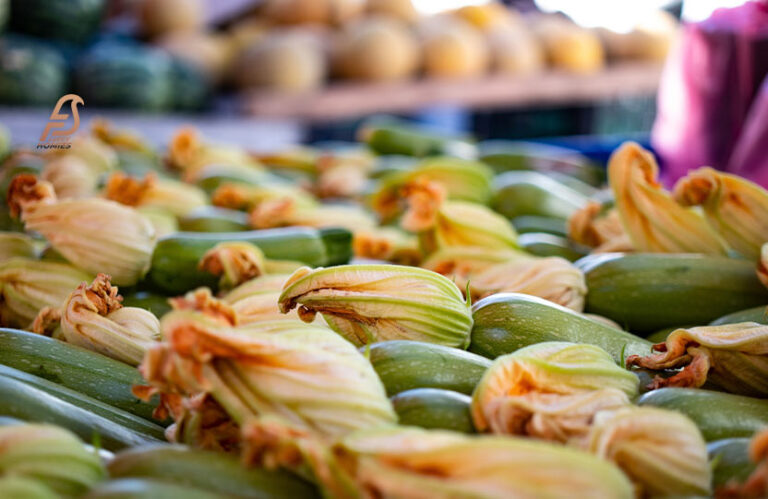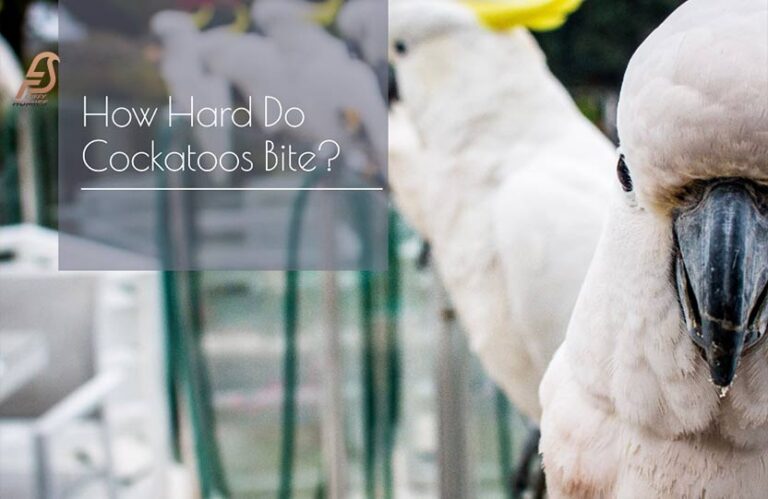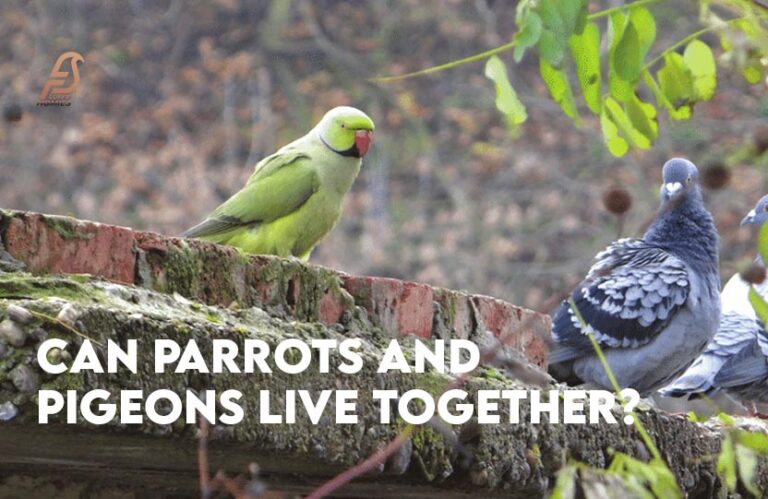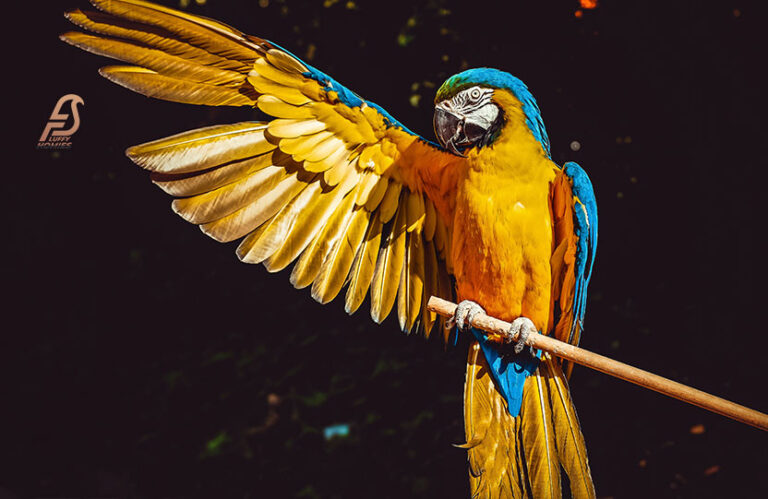Albino Budgies Unveiled (Everything You Need to Know 2024)
Albino budgies are captivating specimens that engross avian enthusiasts on an international scale. These avian species are visually captivating under their exceptional pigmentation deficiency, which is manifested in their vivid crimson eyes and white plumage.
White budgerigars, or albino budgies, are an uncommon genetic variation of the common companion avian species.
This article will provide an in-depth analysis of the captivating attributes of albino budgies, including an examination of their genetics and history, a clarification of their care needs, a discourse on potential health concerns they might encounter, and an unveiling of the mysteries surrounding their gender determination and lifespan.
Furthermore, an examination of the scarcity of albino budgies and an analysis of their accessibility within the pet trade will be presented.
Anticipate an enthralling expedition into the realm of albino budgies, wherein you shall uncover the marvels that render these avian species genuinely unparalleled.
What is an Albino Budgie?
Albino budgies like purple budgies, characterized by their remarkable appearance, are an intriguing variation of the common budgerigar, also known as a parakeet.
In contrast to their conspecifics, albino budgies exhibit a distinct absence of melanin, which explains their entirely white plumage.
This pigment deficiency is also evident in their extremities, beaks, and eyes, which have a pink hue as a result of the absence of melanin in the retina. Albino budgies are distinguished from other budgies by a distinct allure that captivates the interest of bird lovers around the globe.
To attain a comprehensive understanding of albino budgies, one must examine the genetic components that contribute to their unique physical characteristics.
Due to the inheritance of a recessive gene from both parents, albino budgies are incapable of producing melanin. The feather pigmentation is altered as a consequence of this genetic mutation, which is evident in the absence of pigmentation.
As a result of the fusion of particular genes, albino budgies frequently display a completely white plumage; however, variations may arise, manifesting as pale patches or subtle vestiges of color.
The intricate genetic makeup of albino budgies provides an intriguing window into the miracles of evolution and the immense variety that characterizes the avian kingdom.
Albino Budgies History
Albino budgies have a centuries-long and fascinating history. There is a prevailing belief that the initial albino budgies emerged naturally from a genetic mutation and were discovered in the outdoors.
Upon recognizing their exceptional attractiveness, avian enthusiasts and breeders were immediately captivated by these singular birds.
As time passed, methods of selective breeding were refined to augment the albino characteristics, culminating in a visually appealing and more distinctive appearance.
As a consequence, albino budgies gained widespread popularity as companions and were selectively bred for their mesmerizing red or pink irises and exquisite white plumage.
Among avian enthusiasts, the discovery and cultivation of albino budgies have had an enormous impact.
Because of their distinctive genetic composition and eye-catching appearance, they are highly desirable in both aviaries and private residences.
Breeders have devoted countless hours to producing albino budgies that possess the most desirable characteristics, such as vibrant eye color and consistent coloring.
In the present day, albino budgies remain highly valued for their scarcity and sophistication, thereby reinforcing their status as seminal specimens in the annals of avian conservation.
Also Check: How Many Budgies Should I Get in a Cage?
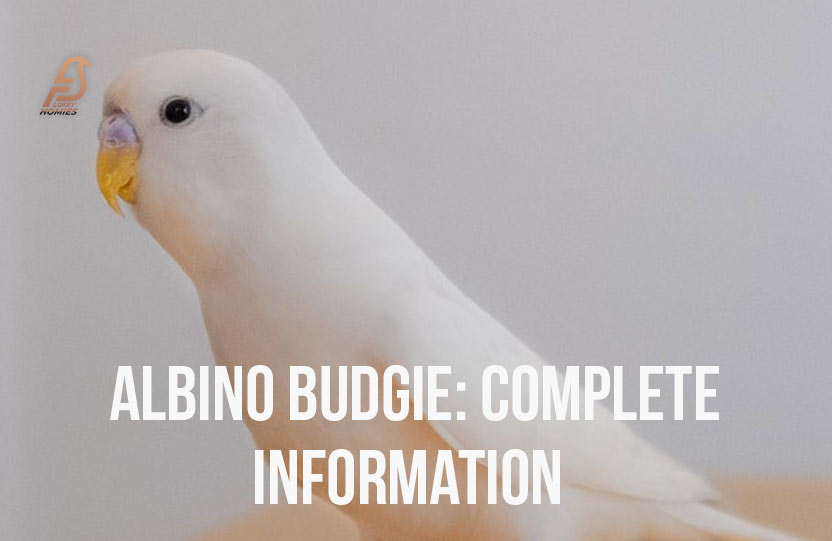
Albino (White) Budgies Appearance
The distinctive aspect of albino budgies is among their most notable characteristics. The feathers of these animals are an absolute white color, devoid of any pigmentation.
This lack of pigmentation even encompasses their irises, plumage, beaks, and legs. Albino budgies possess distinctive scarlet or pink irises, which accentuate their individuality even further.
Their colorless appearance attracts the attention of numerous bird enthusiasts and distinguishes them from other budgies.
Beyond their brilliant eyes and white plumage, albino budgies frequently exude an air of gentleness and ethereality like lutino budgies. The feathers possess an airy and delicate consistency, which contributes to their mild demeanor.
The absence of pigmentation accentuates their elegant silhouette and graceful motions, as they poisedly perch or soar through the air.
Additionally, the lack of color highlights the intricate details of their feathers, thereby increasing the visual complexity and texture of each feather. In general, the physical attributes of albino budgies are undeniably captivating.
Albino Budgies Genetics
The genetic characteristics of albino budgies like black faced parakeets are inherited from their parents. The avian species in question harbor a mutated iteration of a particular gene that disrupts the synthesis of melanin, the pigment accountable for the pigmentation of their plumage.
The TYR gene is the responsible locus for albinism in budgies. The presence of this mutated gene in both parents increases the likelihood of generating albino progeny.
For the progeny to acquire the albino characteristic, the presence of this recessive gene is required in both parents.
Breeders can improve the selectivity of albino budgies by gaining an understanding of their genetic makeup. Brewers can enhance the probability of generating albino offspring by selecting albino budgies with two albino parents with great care.
It is crucial to note, however, that albino budgies are susceptible to health problems by their inherited condition.
Breeders must place the health and well-being of these animals as a top priority and procure appropriate veterinary care to guarantee a comfortable existence.
How to Care for Albino Budgies?
Specialized care is necessary to guarantee the health and well-being of albino budgies. It is of utmost importance to furnish them with a capacious enclosure that facilitates unrestricted movement and enables them to extend their wings.
To maintain their physical agility and stimulate their feet, the cage ought to be furnished with furnishings that differ in size and texture.
Furthermore, furnishing them with a comfortable nesting box can afford them a feeling of protection and a secure location to retire to.
Consistent dietary practices are critical for preserving the general well-being of albino budgies. The principal component of their diet ought to be a premium commercial parakeet seed mix, with additional portions of fresh fruits including guava and vegetables like kale and parsley.
Caffeine, chocolate, and avocado should be strictly prohibited from feeding birds, as these substances are detrimental to them.
It is imperative to furnish daily fresh water and maintain a sanitary water basin to avert the proliferation of detrimental microorganisms.
It is imperative that they consistently replace and clean their food and water containers to preserve a hygienic environment.
In general, the well-being of albino budgies can be enhanced by providing them with a clean and stimulating living environment in addition to a nutritious and well-balanced diet.
Do Albino Budgies Have Health Problems?
Similar to other organisms, albino budgies are vulnerable to health complications. It is essential to observe, nevertheless, that not every albino parakeet will develop health complications.
The susceptibility of an albino parakeet to specific conditions may be influenced by its genetic composition. Other albino budgies may flourish and remain healthy although some may be more susceptible to developing health issues.
It is possible that the light sensitivity of albino budgies could pose a health risk. As a consequence of their pigmentation deficiency, albino budgies like lutino macaw possess irises of a paler hue, rendering them more susceptible to intense light.
This heightened light sensitivity may result in discomfort and irritation of the eyes. Guardians of albino budgies must exercise supplementary caution by offering sufficient shelter and reducing their avian companions’ exposure to intense sunlight.
An additional health concern that may be encountered by albino budgies is an immune system weakness.
Albino budgies may develop specific autoimmune disorders or immune deficiencies, which render them more vulnerable to infections and diseases.
Owners must ensure that their albino budgies have access to a clean environment, adequate rest, and a well-balanced diet to promote their overall health and strengthen their immune systems.
Also Check: How Much Does a Macaw Cost?
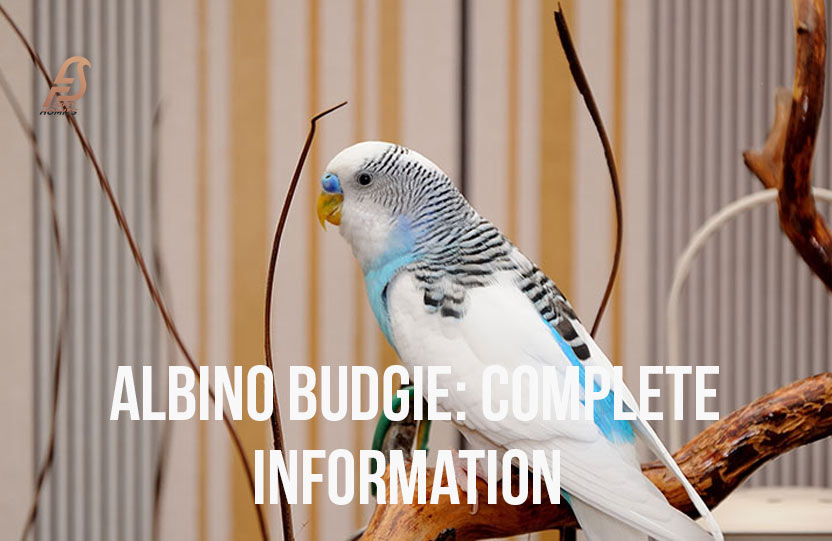
Albino Budgie: Male or Female
Albino budgies, similar to other budgie species such as anthracite budgies, lack discernible gender distinctions predicated exclusively on their physical attributes.
In contrast to certain avian species where discernible physical distinctions, such as vivid plumage or unique markings, are evident between males and females, the sex of an albino budgie can only be ascertained through DNA analysis or by observing its reproductive patterns.
This is because the external characteristics of male and female albino budgies are comparable, including pink beaks, white plumage, and red irises.
The most dependable approach to ascertain the gender of an albino budgie is through the utilization of DNA testing. This requires transporting a minuscule sample of the bird’s secretions, blood, or plumage to a specialized laboratory for analysis.
The laboratory will subsequently identify the specific sex chromosomes present in the sample through genetic testing, yielding conclusive results. However, in the absence of DNA testing, reproductive behavior observation of the parakeet may provide some insight.
Females might exhibit nesting behavior, such as shredding paper or searching out enclosed spaces, whereas males typically exhibit more courtship behaviors, such as chanting, head-bobbing, and regurgitating food.
It is essential to note, however, that these distinctions in behavior are not always conclusive, as budgies can exhibit a vast array of personalities and preferences.
Albino Budgie (Parakeet) Lifespan
Numerous variables impact the longevity of albino budgies. Their lifespan is similarly determined by their diet, overall health, and care as that of any other budgie.
A healthy environment and adequate care can extend the life of albino budgies beyond 5 to 10 years on average; in fact, some specimens may live longer.
Notably, specific health conditions that are more prevalent in this genetic variation can have an impact on the longevity of albino budgies and becomes the reason of sudden death in budgies.
Vision impairments are more prevalent in albino budgies as a result of the absence of pigmentation in their eyes. This may have repercussions on their capacity to navigate their environment and locate sustenance.
Furthermore, their reduced pigmentation renders them more vulnerable to sunburn; therefore, adequate shelter and protection from direct sunlight are imperative.
You can help ensure that albino budgies live happy and healthy lives by applying additional precautions and attending to their particular requirements.
Are Albino Budgies (Parakeets) Rare?
With their brilliantly white plumage and pink or red irises, albino budgies are regarded as an uncommon variety of budgerigar that enhance their cost.
Although official population figures for albino budgies are unavailable, their rarity is frequently ascribed to the particular genetic mutation required to generate this distinctive pigmentation.
The albino mutation, in contrast to lutino and pied, necessitates the complete absence of pigmentation. This results in a reduced prevalence of albino budgies within the budgie community relative to other color variations.
It is imperative to acknowledge that the scarcity of albino budgies does not inherently elevate their value or appeal to all pet owners.
While certain individuals might be attracted to their distinct aesthetic, others might have a preference for alternative coat patterns or color variations.
Ultimately, the scarcity of albino budgies imparts an additional degree of individuality and appeal to these avian companions, rendering them highly desirable for budgie aficionados to keep in their aviaries.
Nevertheless, it is imperative to bear in mind that the motivation for budgie ownership, irrespective of its rarity, should invariably stem from an authentic affection for these perceptive and endearing avian creatures, and not exclusively from their physical characteristics.
How Do You Make an Albino Budgie?
With their striking red eyes and entirely white plumage, albino budgies stand out from the crowd. However, have you ever pondered the origins of these intriguing birds?
Albino budgies are created by selective breeding, which entails pairing two budgies that contain the albinism recessive gene.
Their distinctive white hue is due to a mutation that prevents feather coloration. Keep in mind that there is currently no known way to induce albinism; the disorder is purely inherited.
Breeders meticulously pair off birds with the albino gene to produce albino budgies. The albino phenotype can be passed on through these mattings.
Keep in mind that while both parents carry the albino gene, not every child will be born with the trait. As a result, getting the outcomes you want needs persistence and a steady hand.
To breed healthy albino budgies, one must have an in-depth knowledge of genetics and be very careful with the birds.
Albino Budgies for Sale
Many avenues are open to those interested in buying albino budgies. Bird lovers may now add one of several albino budgies to their homes thanks to the market’s selection of these exotic birds. You should proceed with caution when buying a budgie and check that they are from a reliable breeder.
It is helpful to know what to expect to pay for an albino budgie before you start looking for one. Age, health, and the reputation of the breeder are some of the variables that might affect the price.
It is wise to shop around and compare costs from several vendors to get the best offer. A healthy, well-cared-for budgie will flourish in its new home, so keep that in mind as you think about the bird’s upbringing.
Also Check: Are Budgies Smarter Than Dogs?
Albino Budgie Price
The cost of an albino budgie is a common question among would-be pet bird owners. Availability, demand, and the reputation of the breeder are a few of the variables that affect how much these lovely creatures may cost.
The cost of transportation is another component that could affect the final price, as might the budgie’s age, health, and pedigree.
A healthy albino budgie can cost anywhere from $100 to $300. Keep in mind that the aforementioned factors might cause pricing to be more or lower than stated.
To be sure you’re getting a good deal on an albino budgie, it’s a good idea to look into reliable breeders or talk to someone who specializes in birds.
You should also factor in the ongoing costs of keeping a pet bird into your budget when deciding how much to spend on an albino budgie.
There are a lot of expenses that budgie owners need to think about, including the original investment, housing, food including chickpeas, vet visits, and general upkeep. These recurring costs are essential for the well-being of an albino budgie.
Putting money into your budgie’s health and happiness should take precedence over any concerns you may have about the initial investment.
Your connection with your albino budgie may be rich and joyful for years to come if you plan and provide it the attention it needs.
Conclusion: Albino Parakeets
Albino budgies are fascinating birds, and that is certainly the case when it comes to the conclusion paragraph. Their striking crimson eyes and snowy white plumage make them the center of attention in any home or garden.
Albino budgies are beautiful to look at, but they need special care since they are photosensitive. The distinctive beauty of albino budgies may attract some, but the bird’s well-being must take precedence, and its special demands must be satisfied.
It is important to know what to expect from owning an albino budgie if you are thinking about acquiring one. It is crucial to provide them with plenty of shade and shelter from direct sunshine since their lack of pigmentation makes them more vulnerable to sunburn.
Their eyesight may also be compromised, making it difficult for them to see their way around. For this reason, making sure they have enough room to move about is of the utmost importance.
Despite these added factors, albino budgies are delightful companions for those who can give them the attention they need.
Frequently Asked Question: Albino Parakeets
The cere color of a regular budgie differs in both genders, however, in Albinos it’s the same yet slightly different, making it difficult to detect. This confuses most pet owners when determining Albino budgie’s gender. Albino parakeets can be male or female. Due to genetics, Albino parakeets have more females.
A parakeet that is albino has no pigmentation and is completely white with bright red eyes. A lutino parakeet differs from an albino parakeet in that it has some pigmentation, red eyes, and yellow feathers.
Yes, budgies of the albino and lutino varieties do need extra attention. Because they are photosensitive due to a lack of pigmentation, ultraviolet (UV) illumination is necessary for them. To provide the best treatment possible, including dietary and environmental factors, it is essential to understand their specific genetic characteristics.
The answer is yes, albino budgies can be bred. Albinism is a hereditary disorder caused by a specific genetic defect. Albino offspring can be produced by mating two budgies that contain the requisite genes. To breed successfully, one must understand genetic inheritance.

